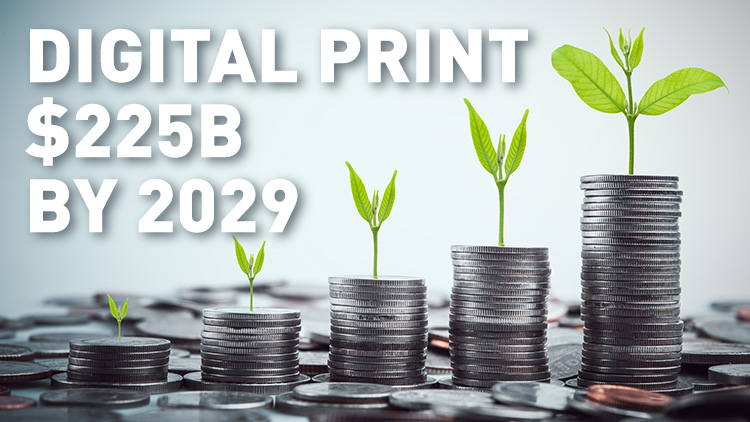Digital (inkjet and electrophotography) systems will become increasingly important across the global print marketplace through the 2020s according to the latest exclusive research from Smithers.
The print industry will continue to evolve in response to multiple economic, technological, demographic, ecological, and behavioural factors. The shift from physical to online print in publication, advertising and transactional print sectors, will continue to cut overall print volumes, and consumer expectations for future printed content is rising.
This is manifesting in demand for shorter run work, faster turnaround, and better print quality. Smithers latest market report ‘The Future of Digital Print: Long-Term Strategic Forecasts to 2029’ identifies how the current and future generations of inkjet and electrophotography presses will capitalise on this demand. It forecasts that in 2029 the global digital print market will reach just over 3 trillion A4 print equivalents with a value of $225 billion, up substantially from $103 billion in 2014 at an average CAGR of 5.3% in value over 2014–29.
The report focuses on key supplier sectors for new print equipment, toners and inks. The drivers for the adoption of digital technologies are discussed and the technology developments that will shape future markets are assessed critically. There are also complete profiles of the leading equipment supplies globally.
While digital print has grown markedly over the last decade, Smithers’ analysis identifies several outstanding challenges. How successfully these are to overcome will impact adoption in different end-uses across the ten years to 2029. These include:
High costs – Capital requirements for the latest generation of high-performance digital print equipment are considerable. The cost of inks, toners and other consumables are also above those for most competing analogue processes.
Company culture and ways of working – For users to be successful in adopting digital print, a significant change in business processes, from sales through to production and dispatch is required. Integrating web-to-print business models in particular can give access to new customers and improve efficiency for print service providers.
Print quality – Toner output leads the way for digital print, competing with offset quality. Inkjet presses have improved and can offer very high print quality in some applications, but many need primer and are still restricted in the range of suitable substrates, which will create a focus for further research across the 2020s.
Legislation and brand owner requirements – In packaging and labels there are stringent low-migration and anti-taint requirements. Digital low-migration ink sets and toners are available, but future work on lowering costs of these is necessary to capture greater market share.
Increasingly capable analogue presses – In parts of the low run print market, the cost-effectiveness of analogue presses is improving. This includes the fitting of inkjet stations in hybrid print configurations that can limit the impact of digital print in certain applications, especially those where variable data print and versioning are required.
Smithers latest report, ‘The Future of Digital Print: Long-Term Strategic Forecasts to 2029’ examines the world markets for digital print equipment and printed media to 2029. Market data is presented in value and print volume terms across all key industry metrics, with inks and toners also quantified in tonnage terms.





